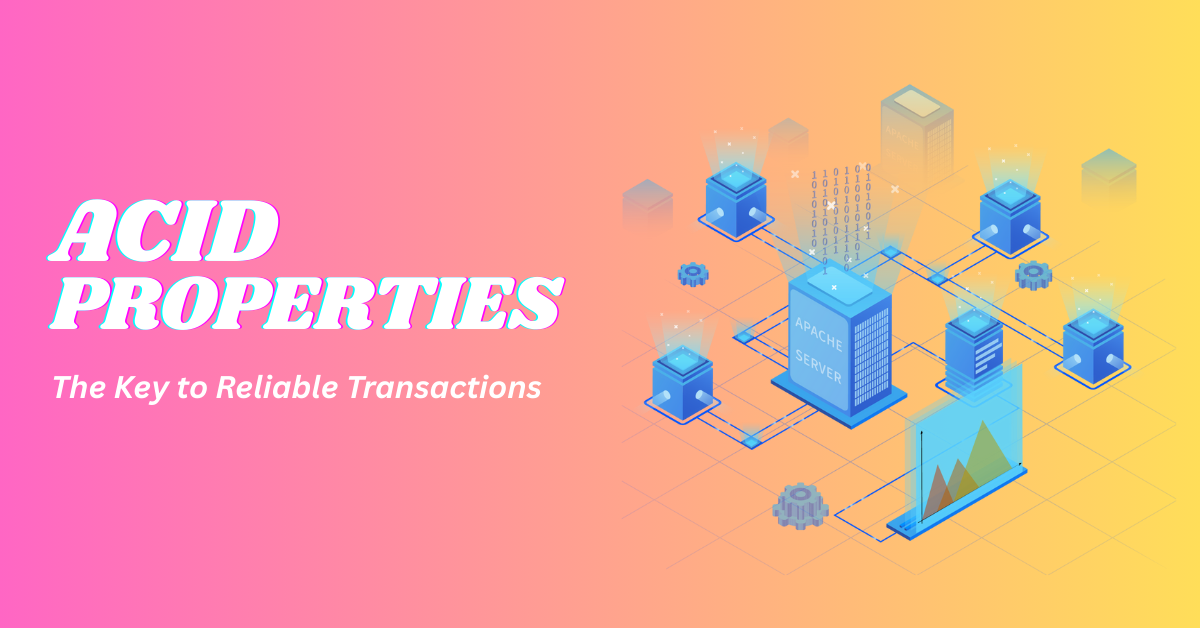ACID Properties in Databases: The Key to Reliable Transactions
When working with databases, one thing is absolutely critical: keeping your data safe, consistent, and reliable. That's where ACID properties come in — a set of principles that ensure every database transaction is handled correctly, even when things go wrong.
In this post, we’ll break down Atomicity, Consistency, Isolation, and Durability — what they mean, why they matter, and how they work behind the scenes to protect your data.
What Is a Database Transaction, Anyway?
A transaction is just a sequence of actions bundled together into a single logical unit of work.
It might involve inserting, updating, deleting, or reading data — sometimes all at once. For a transaction to be considered successful, it has to follow the ACID rules. If it doesn't? The risk of data corruption, conflicts, and all kinds of messy problems goes way up.
Breaking Down the ACID Properties
Atomicity
Atomicity means "all or nothing." Either every operation inside a transaction completes successfully, or none of them do.
Example: Imagine Alice wants to transfer $100 to Bob. Two steps happen
-
$100 is deducted from Alice's account.
-
$100 is added to Bob's account.
If something crashes right after deducting the money but before adding it to Bob’s account, atomicity ensures that the entire transaction is rolled back — so no one loses money unfairly.
Either both operations succeed, or neither does. No half-completed transfers allowed.
Consistency
Consistency ensures that a transaction moves the database from one valid state to another, respecting all rules and constraints.
Example: In a banking app, maybe there's a rule that says "the total balance across all accounts must always stay the same during a transfer." If that's true, consistency ensures that even after moving money around, the system still obeys that rule.
It’s like making sure no matter what happens, the data still makes sense according to the system’s logic.
Isolation
Isolation protects transactions from stepping on each other's toes when multiple users (or apps) are accessing the database at the same time.
Without isolation, transactions could interfere with each other’s data and create huge problems.
Example: Say Alice and Bob are both trying to withdraw from the same account at the same time. Isolation makes sure that each transaction is handled separately, avoiding race conditions or double spending.
Common Isolation Levels:
Read Uncommitted (lowest safety)
Read Committed
Repeatable Read
Serializable (highest safety)
Higher isolation levels mean more protection — but they can also mean slower performance. It’s always about finding the right balance for your application.
Durability
Durability ensures that once a transaction is committed, it remains permanent—even in the event of a system crash. This is usually achieved through logging and checkpoints.
Example: After Alice successfully transfers $100 to Bob, the system guarantees that this change is permanently saved and cannot be undone by a failure.
Why ACID Matters
Following ACID properties isn't just about ticking boxes — it’s about building trustworthy, reliable systems. Here’s why they’re critical:
🛡 Data Integrity: Your data stays accurate and consistent.
⚙️ Fault Tolerance: Survive crashes, power failures, and other disasters.
🔄 Concurrency Control: Handle multiple transactions at once without chaos.
🤝 User Trust: Your users know their data is safe and dependable.
Whether you're working with traditional relational databases like MySQL and PostgreSQL, or modern NoSQL systems like MongoDB (which now supports ACID transactions), these principles are the foundation of every well-behaved database.
Conclusion
Understanding and implementing ACID properties is fundamental for building robust and reliable database systems. Whether you're working with relational databases like MySQL and PostgreSQL or NoSQL databases with ACID compliance (e.g., MongoDB with transactions), these principles ensure your data remains consistent and secure.
By adhering to Atomicity, Consistency, Isolation, and Durability, you can maintain the integrity of your data and provide a reliable experience for users.





